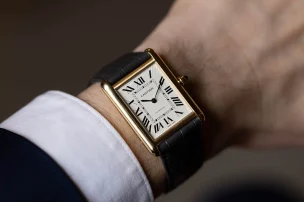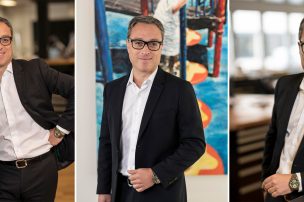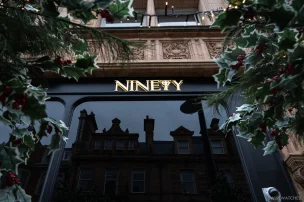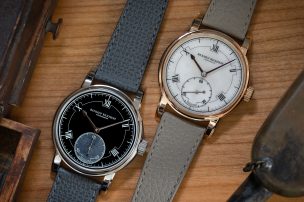
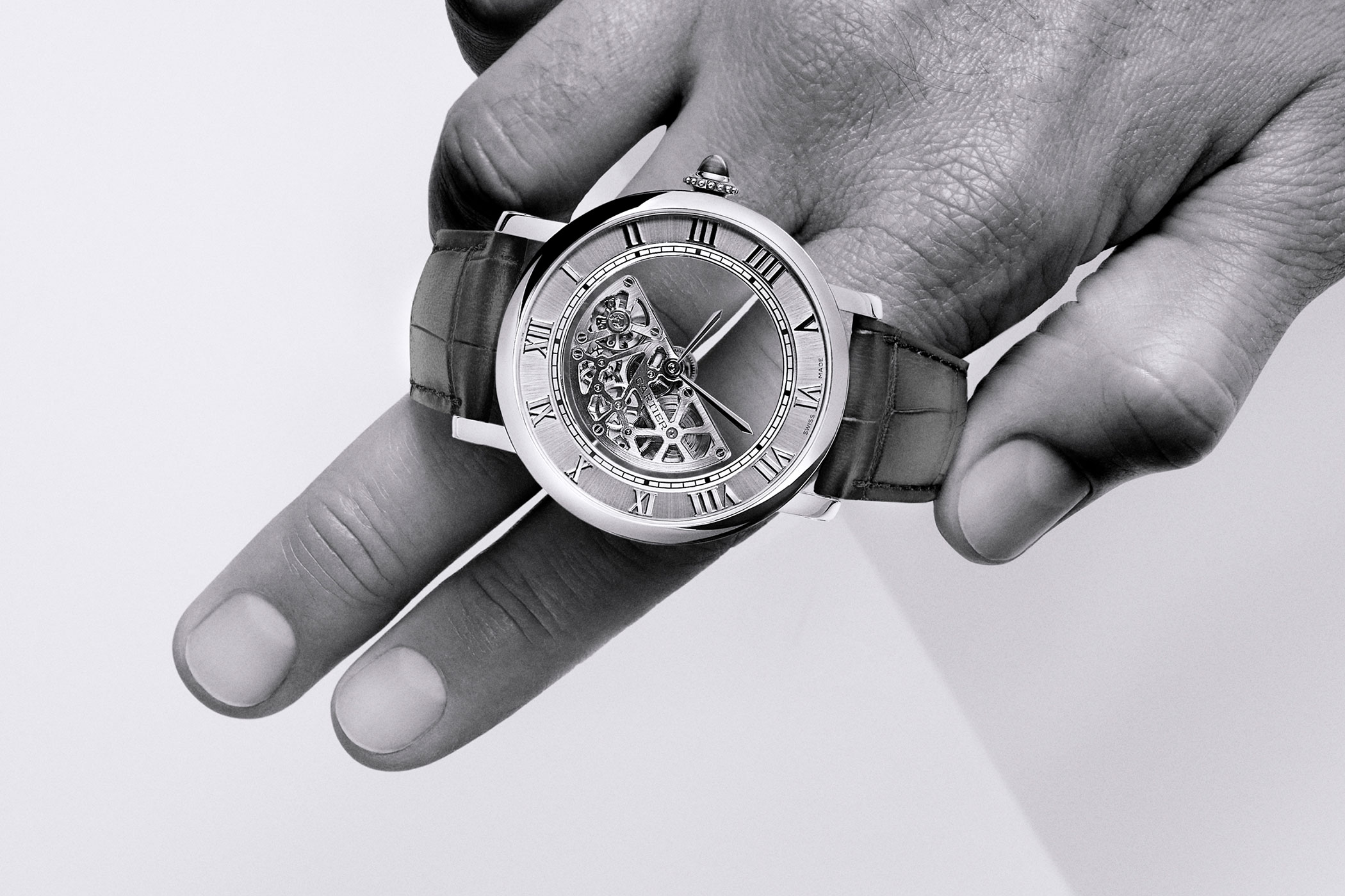
In The Metal: The Secret Behind The Cartier Masse Mystérieuse
One of the true deities of French Haute Joaillerie, luxury goods house Cartier has been revered for its tradition, elegance, and class since its founding in 1847. It is also known for its watches, from the dainty Tank to the statement Santos-Dumont. What it is less celebrated by wider audiences beyond the niche realms of the watch world, however, is Cartier’s extraordinarily high level of Swiss watchmaking. This doesn’t refer to blindingly beautiful, diamond-embedded jewellery pieces such as the flamboyant new Métiers d’Art Crash Tigrée Métamorphoses, but rather to the incredible horological feats materialising in the form of Cartier’s ‘mystery clocks’.
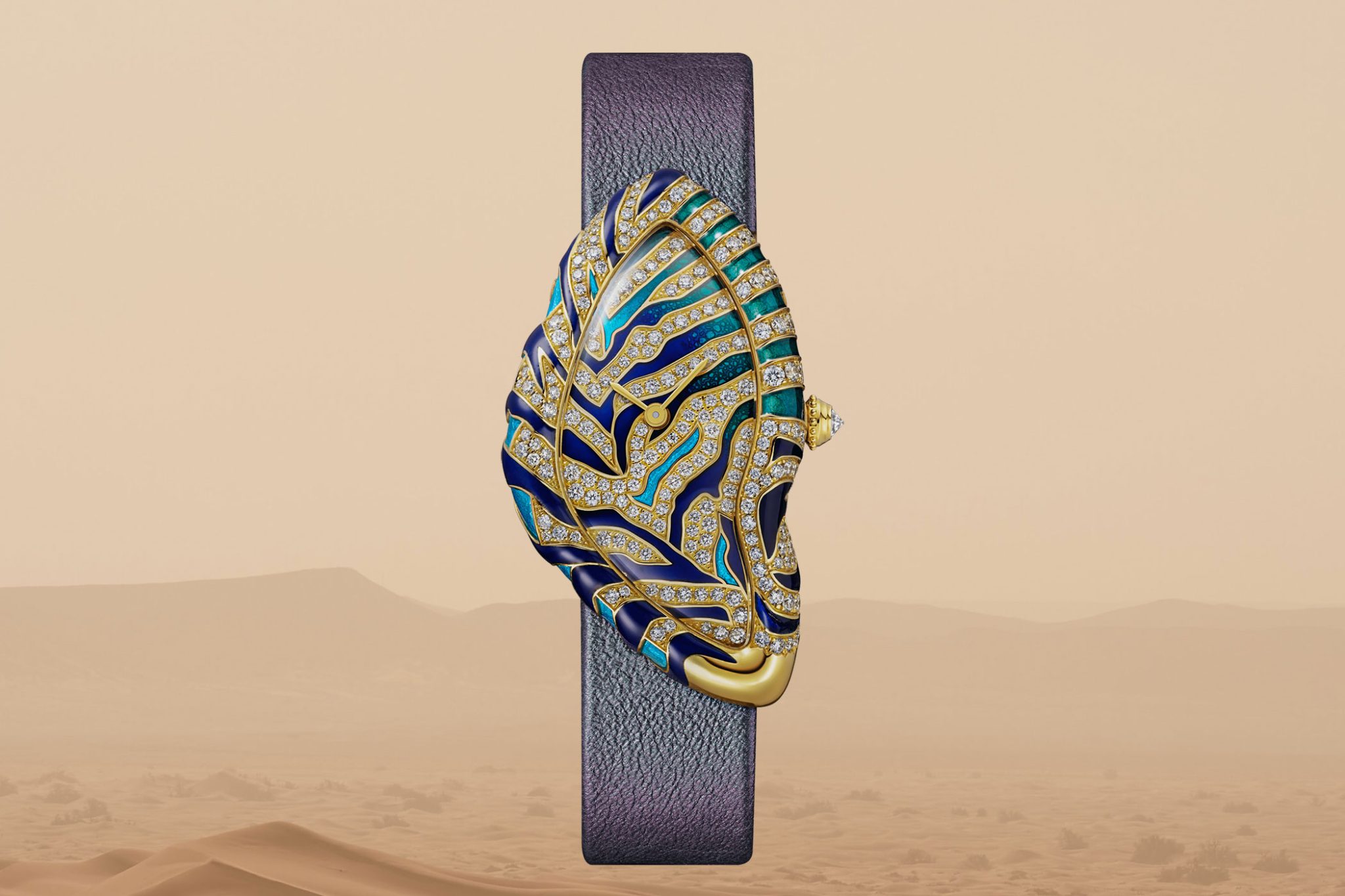
Cartier Métiers d’Art Crash Tigrée Métamorphoses
At first glance, there is nothing glitzy, glamorous, or overly ostentatious about the latest such invention. No. The sole aim of this purist yet prodigal watch, having been designed, developed, and assembled within Cartier’s watch manufacture, is to epitomise and exhibit the most important elements of luxury items: technical know-how and savoir-faire. The new Masse Mystérieuse places Cartier far above bring the true deities of French Haute Joaillerie for which it is best known, rightfully reminding us that Cartier is a maison that truly belongs at the top of the complicated Swiss watchmaking game.
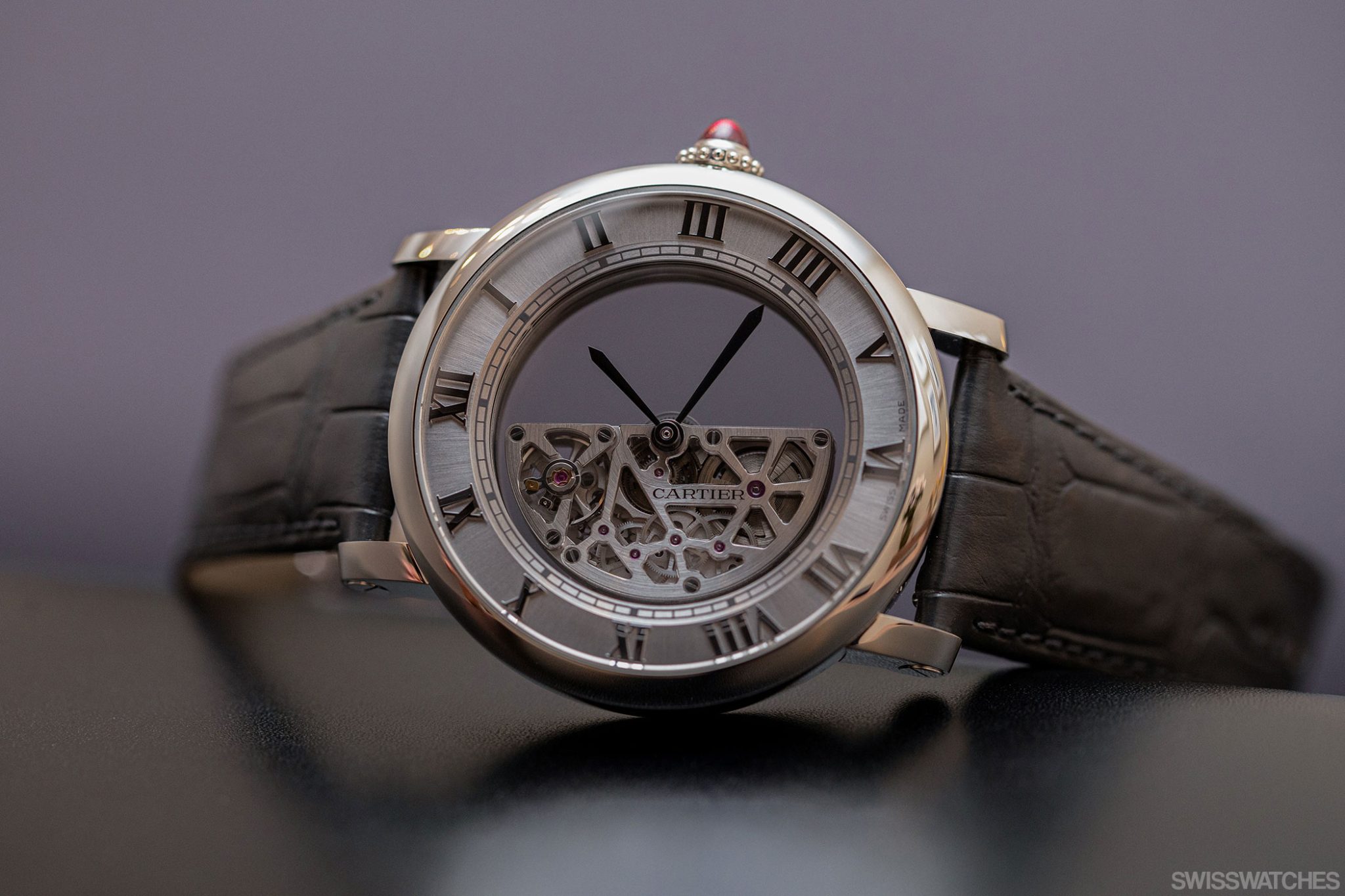
Cartier Masse Mystérieuse Limited Edition of 30 pieces
The history behind the mystery
Before moving onto the watch itself, it’s worth taking a look at the context behind this piece. The term ‘mystery’ has a lengthy history at Cartier dating back to 1912 and is used in relation to timepieces featuring hour and minute hands that appear to float. Crowned ‘miracles of timekeeping’ by one fashion magazine back in 1925, these clocks were created by Louis Cartier alongside a renowned young clockmaker of the time, going by the name of Maurice Coüet. He would soon become Cartier’s exclusive supplier, notably taking inspiration for his horological creations from his father – an illusionist and magician, of course.

Maurice Couet, shown in the Cartier clock workshop in 1927, was responsible for the design of Cartier’s great Art Deco clocks.
The ‘mystery’ floating clocks Coüet created did not directly link the hands to the movements. Rather, they attached to two crystal discs fitted with serrated metal edges. Activated by the movement, usually housed in the clock’s base, these discs then turn the hands, one for the minutes hand and the other for the hours hand. To ensure that the illusion is perfect, the edges of the discs are concealed by the hour circle. This historical framework is similar to the 2022 model, in which the hands float in the space of the case, without being connected to any gears.

Cartier Mystery Clocks Couet
The 2022 Masse Mystérieuse
In the process of creating this latest edition, Cartier’s experts built five different constructions before even launching a prototype, followed by two further prototypes in order to develop the calibre into its final configuration. The world is now seeing the fruits of the watchmaking team’s labour, as the Cartier Masse Mystérieuse surpassed all expectations at Watches & Wonders 2022. Why? The answer lies in the fact that the history-making watch condenses its skeletonised, gravity-defying calibre into the oscillating weight itself. As everyone commented in hushed voices upon seeing it for the first time, this calibre was nearly eight years in the making – and it was worth the wait.
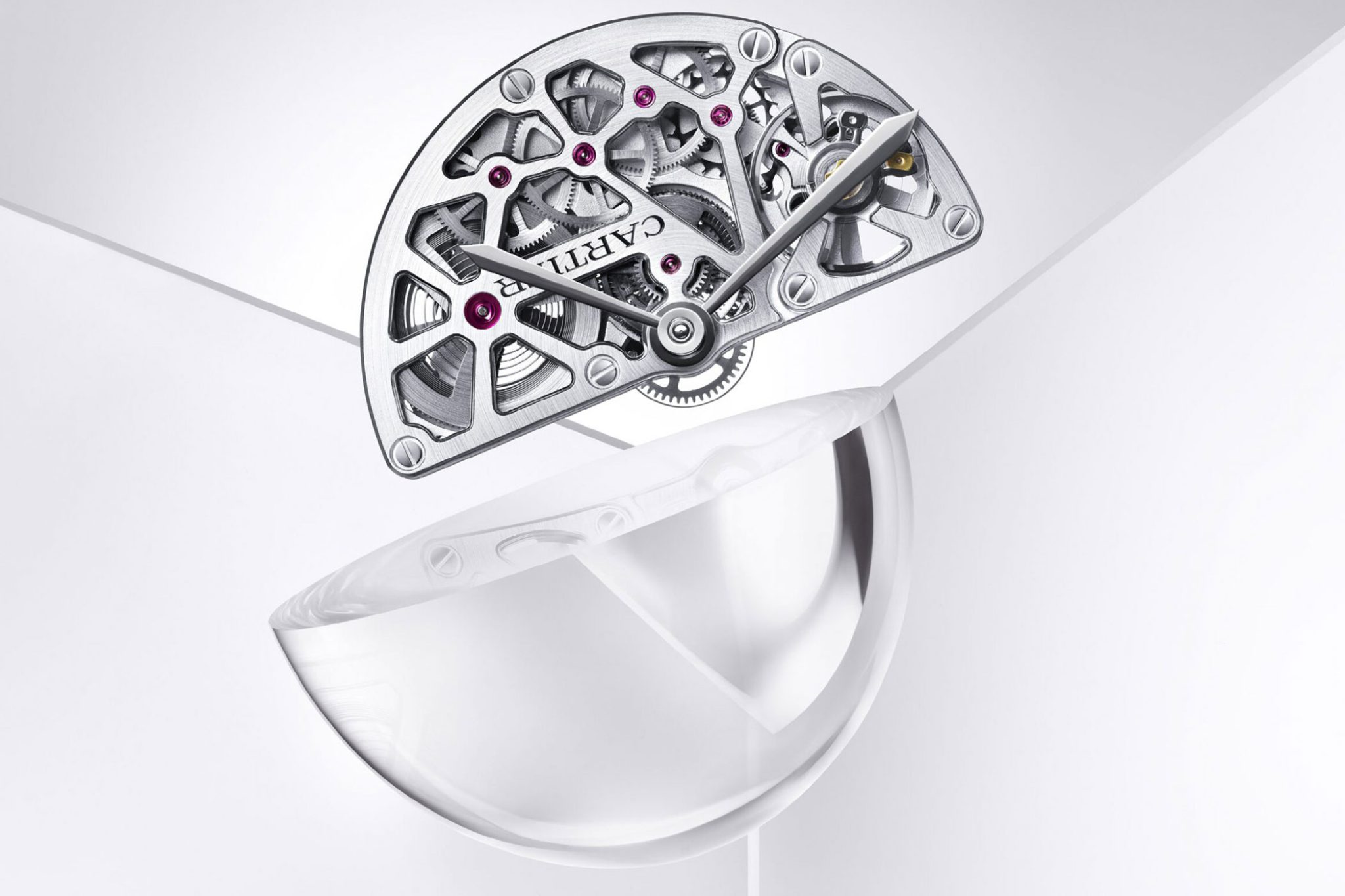
Solving the mystery: how does this unusual calibre even work?
The new movement that literally defines the entire watch’s DNA is christened the 9801 MC. So how does this ground-breaking patent, currently awaiting its patent, work? Well, the heart of the movement lies at the centre, and uses an ultra-sophisticated differential system to prevent the hour and minute hands from being caught in the mass. Interestingly, although as is increasingly common in the industry, the watchmakers adopted this system by dipping into automotive know-how.
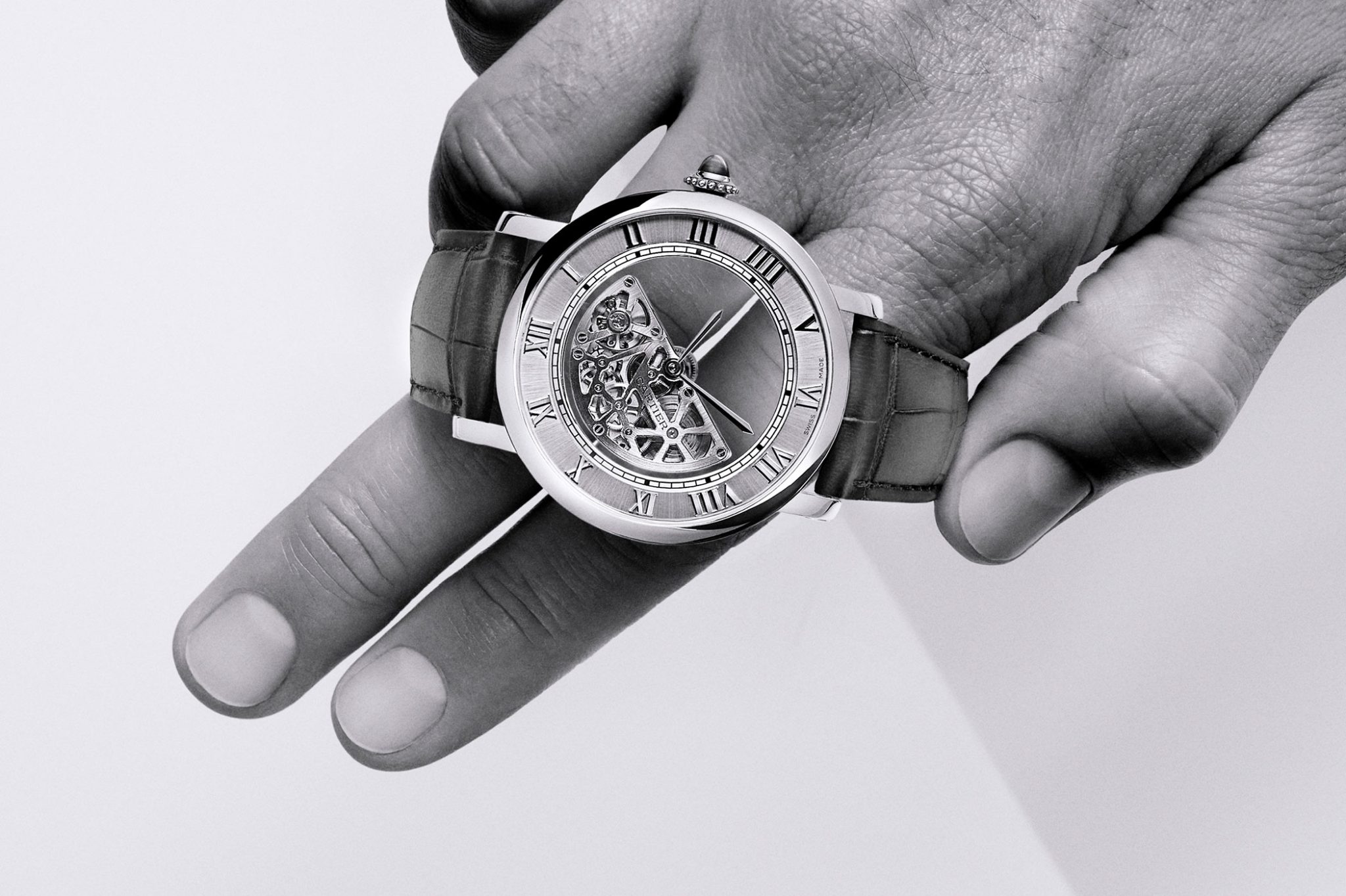
The rotor
Given its leading role within this watch (all components that receive energy from the movement, transmission and regulation are integrated in the rotor), the rotor of course deserves a paragraph to itself. Unlike most, this rotor rotates in both directions at an irregular speed. The reason for this unusual choice is that the combination of it taking two courses, combined with the unevenness of tempo ensures that the balance wheel always remains in the same vertical position, no matter where the rotor might be lying as it swings its way around the dial.
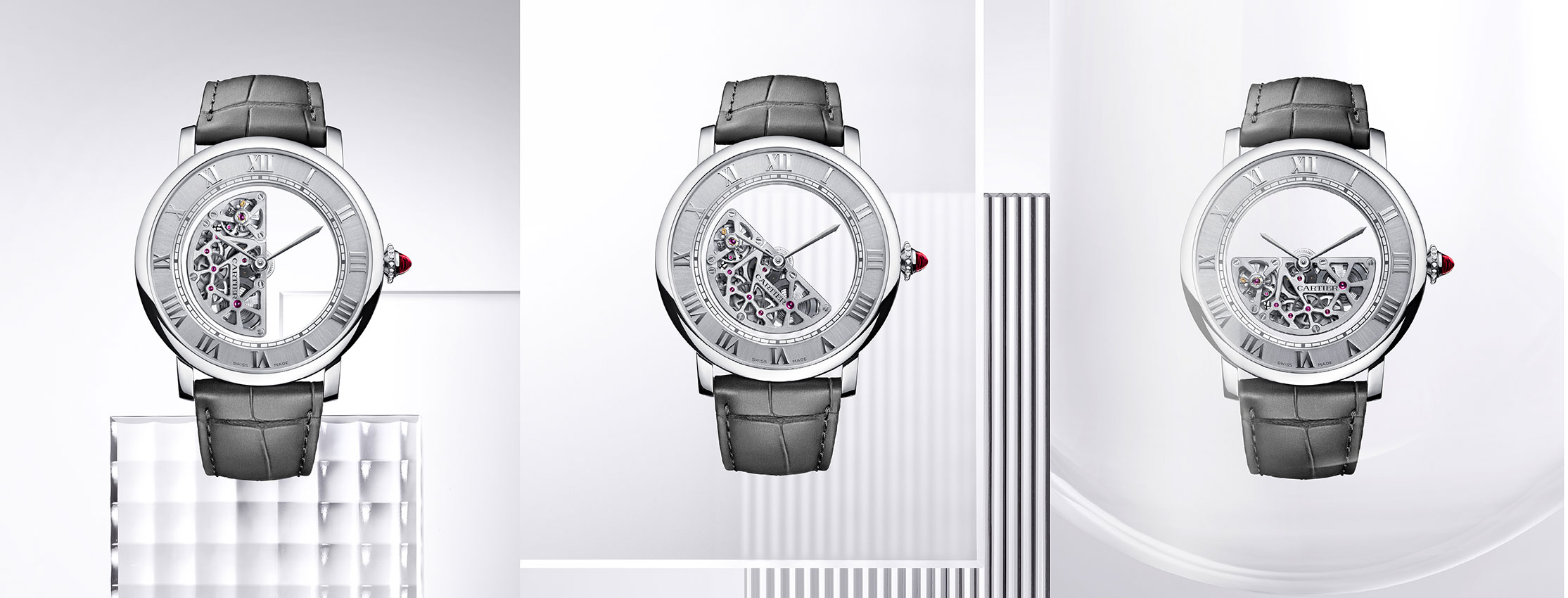
The very special calibre 9801 MC has a height of 7.3 mm and integrates 43 jewels, while beating at a frequency of 4 Hz and offering a decent 42-hour power reserve. The sapphire crystal dial and case-back means that we are offered one of those priceless opportunities to look all the way through the watch, through the movement and out the other side. I always think these open and skeletonised movements can teach us more than a hundred books – what better way to learn about watchmaking than through observing in person?
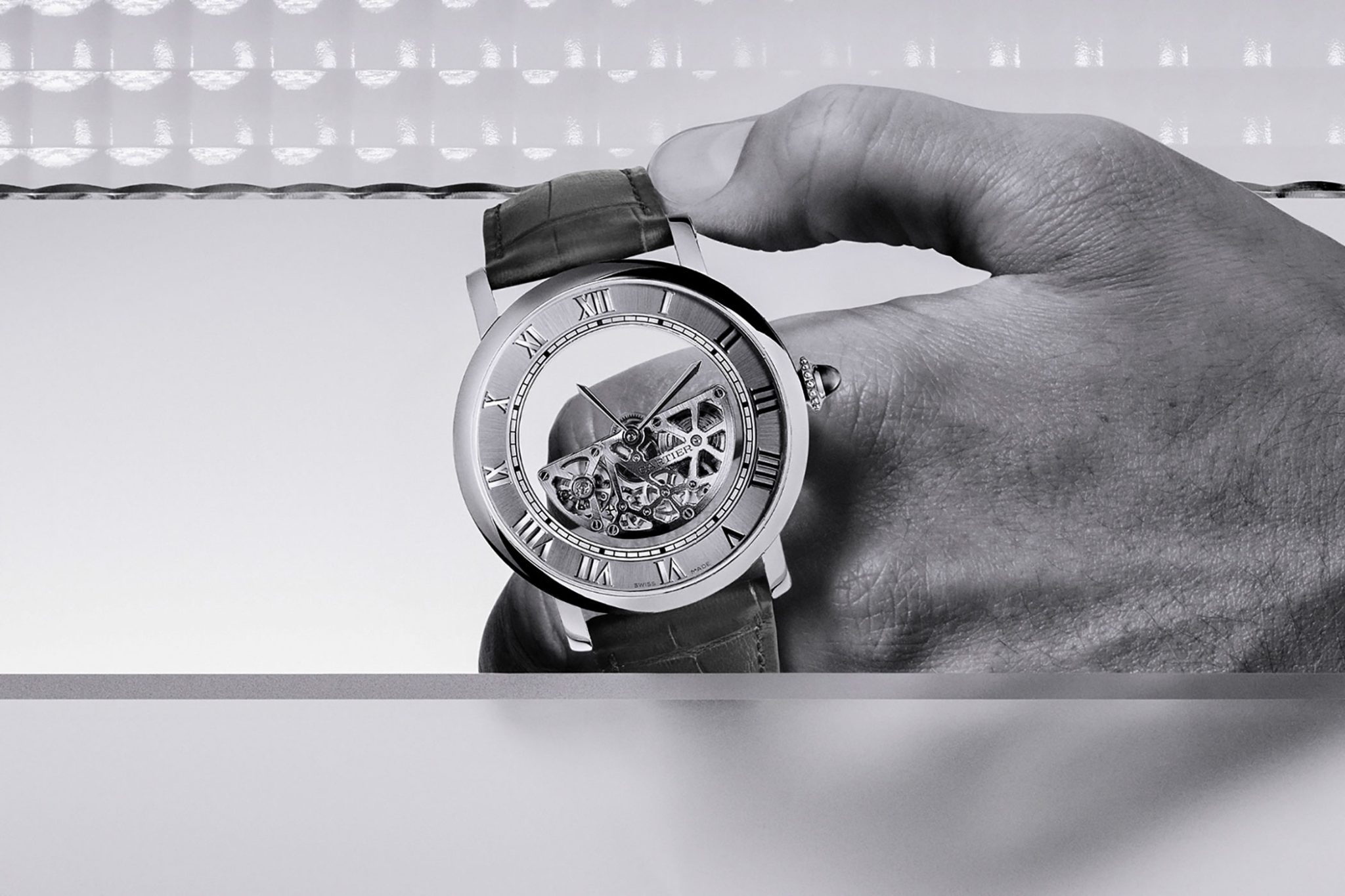
Further facts and figures
Having gone through what exactly makes this such an exciting release, we can conclude by looking at the low-down of this watch. The Cartier Masse Mystérieuse is housed in a 43.5 mm case with water-resistance to 30 m, is made of platinum, and accompanied by a crown set with a ruby cabochon. Of course, Cartier’s designers may have opted for a lowkey colour scheme, but the size is definitely not subtle, being comparable in size to your average modern-day sports watch. This allows the 39.6 x 7.3 mm rotor to be viewed in all of its glory, while still providing very clear hour indications using unmistakable Cartier Roman numerals applied to the chapter ring. The minutes, on the other hand, are indicated with the help of a pretty dainty rail-minute track, originally conceived by Louis Cartier himself.
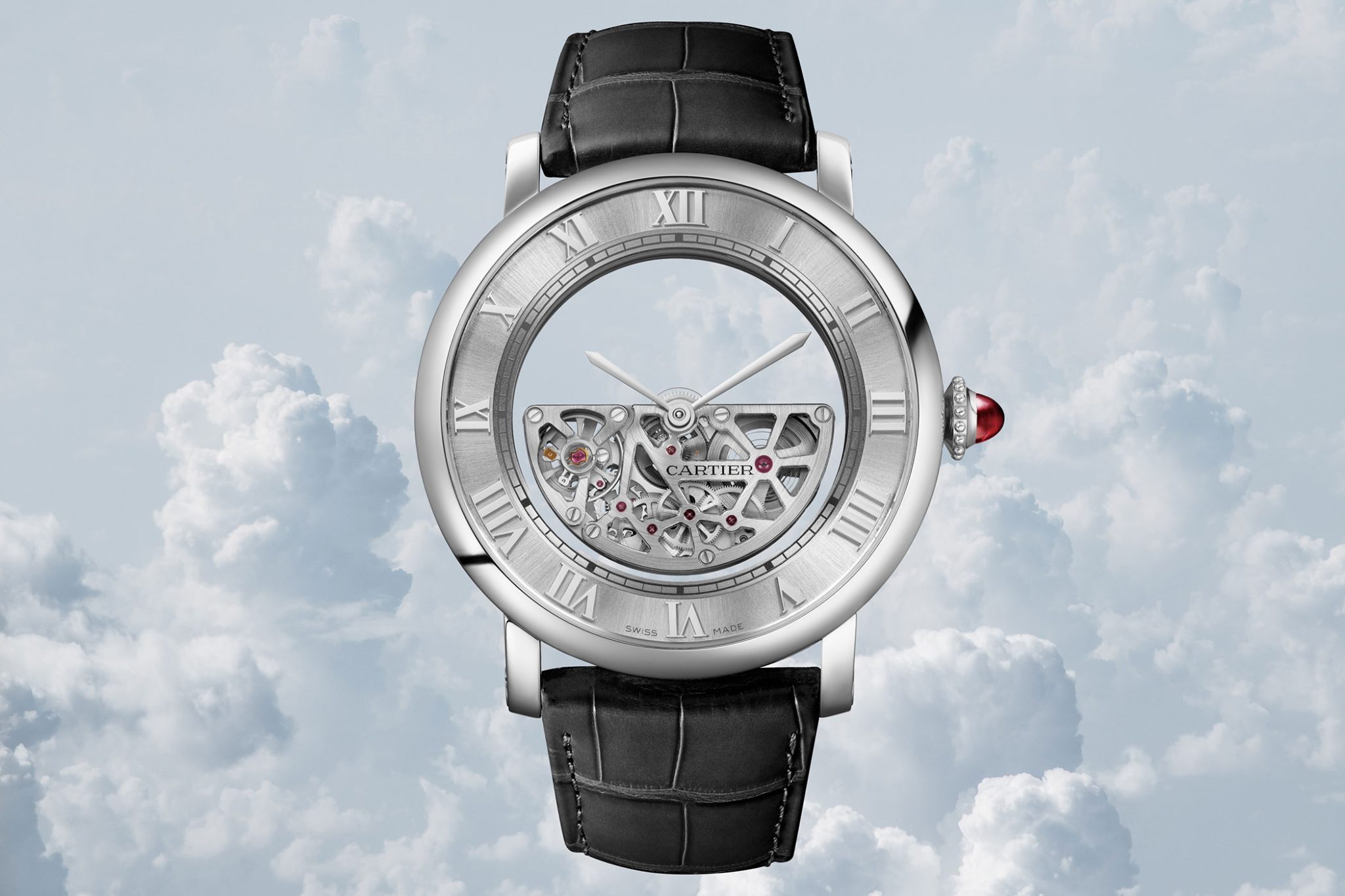
The watch comes on a matching semi-matt dark grey or black alligator leather strap that matches well to its lowkey vibe. As well as this main version priced at 250,000 euros, of which 30 numbered pieces are available, Cartier is also offering another two similar options: one set with baguette-cut diamonds round the bezel, and another fully set option with diamonds covering both the case and platinum bracelet (10 pieces each).


